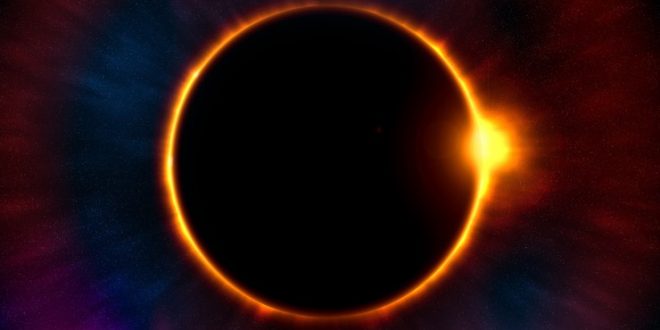‘Tis the season… eclipse season that is, as a spectacular “ring of fire” annular solar eclipse marks the end of the first of two eclipse cycles for 2017.
You’ll need to mark the date down in your calendar (although it depends where you’re based), because you won’t want to miss what is, in my opinion, the best type of solar eclipse: Feb. 26 is going to be a night to remember, as long as you’re in the right location.
Broadly speaking, an eclipse occurs when the Moon comes between the Earth and the Sun, partially or fully blocking out some of the Sun’s light. For anyone wondering what makes the annular one special, allow me to explain so you can get just as hyped about it as me. There are actually four different eclipses that can grace our skies at various points throughout the year: Total, partial, annular, and hybrid. Different types of eclipses occur because the orbits of both the Earth and the Moon are elliptical, meaning they’re not perfectly circular.
The upcoming annular solar eclipse is cool because in this case, the Moon doesn’t completely block out the solar disk of the Sun as it would in a total solar eclipse (FYI, a total solar eclipse is coming up on Aug. 21, 2017). Instead, some of the Sun will be visible behind the Moon ,so when we look up it, a stunning ring of sunlight, or “ring of fire,” as it’s also known, will be visible in our sky.
Zones of visibility
The path of the annular eclipse will cross the South Pacific Ocean, South America, the South Atlantic Ocean and Africa. Nations that will be within the path include Chile, Argentina, Angola, Zambia and the Democratic Republic of the Congo. In South America, the first landfall of the moon’s antumbra will occur along the southern shore of the Gulf of Corcovado. Moving inland, the track crosses the Chilean village of Puerto Aisen and the larger town of Coyhaique before moving into Argentina. The so-called ring of fire will be visible from the towns of Malaspina and Camarones, which are situated along the coastal highway that runs from Comodoro Rivadavia and Rawson. Then, the shadow will head out over the open ocean waters of the South Atlantic, with its next landfall coming about 160 minutes later in Africa.
The moment of greatest eclipse will occur midway between the continents at 1452 GMT, when the moon will cover 99.2 percent of the sun’s diameter. The width of the antumbra at this spot on Earth will have shrunk to just 19 miles (31 km), and the annular, or ring, phase will last just 44 seconds.
When the shadow arrives at the west coast of Africa at Lucira, Angola, its width will have increased to 44 miles (70 km), and the duration of the ring phase will have increased to just over a minute. But at this point, the sun will be low in the western sky as the eclipse track nears its end. Continuing east, the moon’s shadow will pass over the village of Cuima, south of Huambo, and then race into northwest Zambia just prior to leaving the Earth just to the west of Lubumbashi, in the Democratic Republic of the Congo, producing a fantastically unusual sunset; instead of a reddened ball, the sun will resemble a fiery hoop.
Annular Solar Eclipse Live, February 26, 2017
Agencies/Canadajournal
 Canada Journal – News of the World Articles and videos to bring you the biggest Canadian news stories from across the country every day
Canada Journal – News of the World Articles and videos to bring you the biggest Canadian news stories from across the country every day



